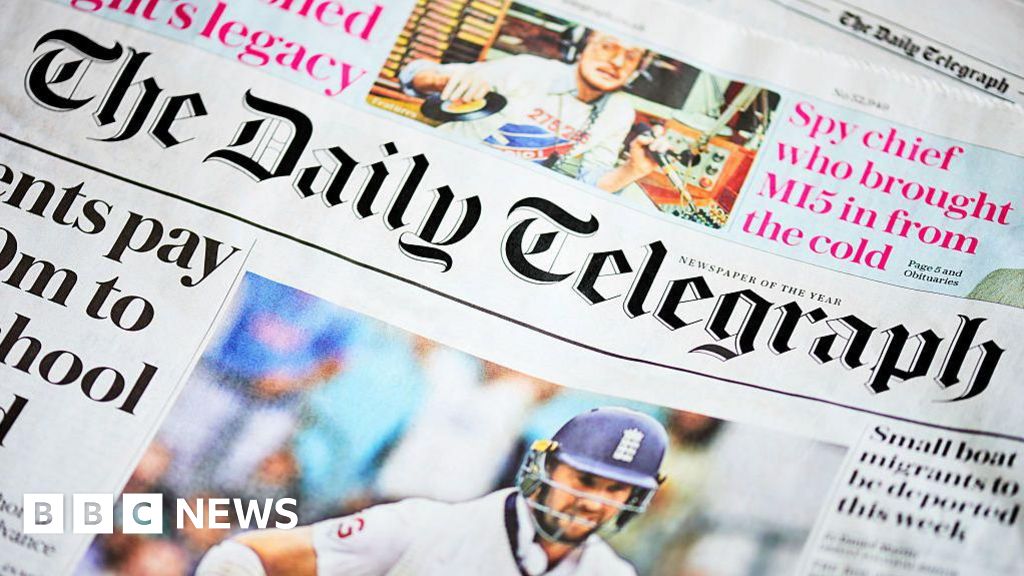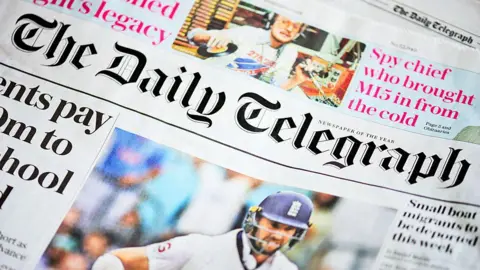Business
‘Ongoing continuously’: India-US in contact at various levels for trade deal; FTA talks also on with EU – The Times of India

NEW DELHI: Union Commerce and Industry Minister Piyush Goyal indicated on Tuesday that the government is maintaining contact with the United States at various levels concerning the proposed Bilateral Trade Agreement (BTA), suggesting potential progress towards the agreement.The minister, however, avoided specifying any timeline for completing the BTA negotiations, noting that discussions continue without fixed deadlines. “Our talks with the United States are ongoing continuously. Contacts are maintained at different levels. We never negotiate based on deadlines. The possibilities are full. Every possibility exists. Currently, the US government is in shutdown mode. In light of that, we’ll have to see how, where, and when the talks can take place,” the Union Minister stated during his Qatar visit.
This comes just two days external affairs minister S Jaishankar clarified India’s stance, talking about ‘respecting the red lines’. Acknowledging that there are “problems” and “issues” in the India-US relationship that need resolution, Jaishankar said on Sunday that any understanding on bilateral trade “has to be (one) where our bottom lines, our red lines are respected.” “There has got to be a trade understanding with US. But… in any agreement, there are things you can negotiate and things you can’t,” he added, asserting that India will not compromise on matters affecting the interests of farmers, small-scale industries, and fishermen.
Trade talks with EU
Meanwhile, regarding Free Trade Agreement (FTA) discussions with the European Union, Goyal said, “There are very good discussions going on between EU and India in Brussels. Our entire team is there.” He shared positive views about the partnership between the $20 trillion European Union comprising 27 nations and India, currently the fastest growing large economy globally.Goyal highlighted the advantages both partners bring: India’s youthful, skilled workforce alongside the EU’s technological and innovative capabilities. “We are hoping to work together in a spirit of deep understanding of each other’s sensitivities so that we can conclude a very equitable, fair and balanced free trade agreement between the $20 trillion European Union of 27 countries and India, the fastest growing large economy in the world today, we complement each other,” he stated.Goyal further added, “Our young, talented and skilled population is a great resource for the European Union who needs talented young people. The innovation and technology base that European Union has holds tremendous potential for Indian businesses and jointly the European Union companies and Indian companies can leverage each other’s strengths so that we can serve the world together.”He announced that Commerce Secretary Rajesh Agarwal would visit Brussels to meet his counterpart after the current discussions conclude, planning the next steps.Addressing the FTA timeline, Goyal said, “I have often said that we neither do negotiations with a deadline, nor do we like to unnecessarily delay negotiations. So we will make every endeavor to meet the leaders expectations and complete the negotiations before the end of the year and I see tremendous potential and possibility.”
Business
Byju Raveendran Faces USD 1 Billion Default Judgment In US, Plans Appeal

Last Updated:
US court orders Byju Raveendran to repay USD 1 billion to BYJU’s Alpha and GLAS Trust Company LLC. Raveendran plans to appeal.
Byju’s founder Byju Raveendran has challenged a recent default judgment by a US bankruptcy court that holds him liable for repaying over USD 1 billion.
In a major setback, the US Delaware court has ordered Byju Raveendran, the founder of ed-tech, to repay USD 1 billion to BYJU’s Alpha and US-based GLAS Trust Company LLC, according to a report of PTI. The court has held Raveendran personally liable for the damage upon the petition filed by the lender.
The court also found that Raveendran lapsed to comply with the discovery order and continued to be evasive on several occasions. “The court will enter default judgment against Defendant Raveendran…in the amount of USD 533,000,000, and on Counts II, V and VI in the amount of USD 540,647,109.29,” the judgement said, as reported by PTI.
Byju Raveendran is going to contest the US court judgement.
In a press statement, Raveendran’s lawyers said they will “promptly appeal” the ruling, arguing that the court issued the judgment on an expedited timeline that “precluded” him from presenting his side. Raveendran has denied all allegations made in the case.
The legal team also accused GLAS Trust of misleading the Delaware Courts and the public, claiming the judgment should not have been issued at all. According to them, the court granted monetary relief even though GLAS had withdrawn its damages claim in September 2025.
“This judgment stems from an accelerated procedure triggered by serious misrepresentations made by GLAS,” the release stated. The team added that Raveendran will soon submit evidence of this alleged misconduct as part of a separate claim worth at least USD 2.5 billion, which he plans to file before the US courts.
The statement further said the latest Delaware Court ruling was a direct result of GLAS “securing judicial relief by misleading the courts,” with the aim of harming Raveendran personally and indirectly affecting other suspended directors of Think & Learn Pvt. Ltd.
Raveendran’s team also highlighted that he was given insufficient time to hire legal counsel and respond to the accelerated court actions.

Varun Yadav is a Sub Editor at News18 Business Digital. He writes articles on markets, personal finance, technology, and more. He completed his post-graduation diploma in English Journalism from the Indian Inst…Read More
Varun Yadav is a Sub Editor at News18 Business Digital. He writes articles on markets, personal finance, technology, and more. He completed his post-graduation diploma in English Journalism from the Indian Inst… Read More
November 22, 2025, 18:19 IST
Read More
Business
Daily Mail owner agrees to buy Daily Telegraph for £500m

 Getty Images
Getty ImagesThe publisher of the Daily Mail has agreed to buy the Daily and Sunday Telegraph for £500m.
The Daily Mail and General Trust (DMGT) said it had entered a period of discussion with RedBird IMI, which is a joint venture between the United Arab Emirates and the US private equity firm RedBird Capital Partners.
RedBird Capital’s own bid for control of the Telegraph collapsed last week.
The deal needs to be signed off by Culture Secretary Lisa Nandy. A spokesperson said Nandy would “review any new buyer acquiring the Telegraph in line with the public interest and foreign state influence media mergers regimes”.
DMGT and RedBird IMI have said they expect the deal to be finalised “quickly”.
DMGT chairman Lord Rothermere said he had “long admired the Daily Telegraph” and the deal would give “much-needed certainty and confidence” to its employees.
He said: “The Daily Telegraph is Britain’s largest and best quality broadsheet newspaper and I have grown up respecting it. It has a remarkable history and has played a vital role in shaping Britain’s national debate over many decades.”
He added: “Chris Evans is an excellent editor and we intend to give him the resources to invest in the newsroom. Under our ownership, the Daily Telegraph will become a global brand, just as the Daily Mail has.”
The purchase would see the Telegraph become part of DMGT’s portfolio of media organisations, which includes the i Paper, Metro and New Scientist, along with the Daily and Sunday Mail papers.
The group said the Telegraph would remain editorially independent from DMGT’s other titles.
It also said its case for having the deal approved was “compelling” and would comply with UK regulations, as there would be no foreign state investment or capital in the funding structure.
A spokesman for RedBird IMI said: “DMGT and RedBird IMI have worked swiftly to reach the agreement announced today, which will shortly be submitted to the secretary of state.”
RedBird Capital pulled out of a deal to buy the Telegraph last week.
It had a previous attempt to buy the group rebuffed by politicians as it was majority-funded by Abu Dhabi’s IMI group – which is owned in turn by the Abu Dhabi royal family.
A law change meant that foreign sovereign wealth funds could take a maximum stake of 15% in newspapers or periodicals.
Its more recent bid complied with that rule, but it was understood that the government intended to submit the deal to regulatory review.
Sources close to RedBird insisted that they were confident that the bid would have passed a government review process, but cited negative articles toward the bid from the current Telegraph newsroom as a factor in shelving their interest.
RedBird founder Gerry Cardinale had planned to expand the Telegraph’s reach and subscriber base in the US, believing there to be a gap in the market.
Among other investments, RedBird owns the Italian football team AC Milan.
The Telegraph has been in limbo for over two years, when the RedBird IMI consortium paid off the debts of the Telegraph’s previous owners, the Barclay family, hoping to take eventual ownership of the newspapers.
Business
Pakistan Removes Ban on Gold Import and Export – SUCH TV

The federal government has lifted the ban on the import and export of gold, officials confirmed on Saturday. The Ministry of Commerce issued the order following approval from the federal cabinet.
In addition, the government has introduced some amendments related to the trade of precious metals and jewellery, while maintaining the existing framework for their import and export.
The ban on gold trade was initially imposed on May 6, 2025, after complaints of smuggling surfaced.
The ministry had suspended the SRO regulating gold trade for 60 days. However, no new cases of smuggling have been reported in recent months.
Gold continues to serve as a traditional store of value and remains an important part of Pakistan’s cultural, financial, and manufacturing sectors.
Pakistan predominantly imports gold from the UAE, Switzerland, and other major gold-trading hubs.
-

 Tech7 days ago
Tech7 days agoNew carbon capture method uses water and pressure to remove CO₂ from emissions at half current costs
-

 Politics1 week ago
Politics1 week agoBritish-Pakistani honoured for transforming UK halal meat industry
-

 Business1 week ago
Business1 week agoThese 9 Common Money Mistakes Are Eating Your Income
-

 Sports7 days ago
Sports7 days agoTexas A&M officer scolds South Carolina wide receiver after touchdown; department speaks out
-

 Fashion1 week ago
Fashion1 week agoAfter London, Leeds and Newcastle, next stop Glasgow for busy Omnes
-

 Sports1 week ago
Sports1 week agoApple scrapping MLS Season Pass service in ’26
-

 Business1 week ago
Business1 week agoWhat’s behind Rachel Reeves’s hokey cokey on income tax rises?
-

 Tech1 week ago
Tech1 week ago$25 Off Exclusive Blue Apron Coupon for November 2025












